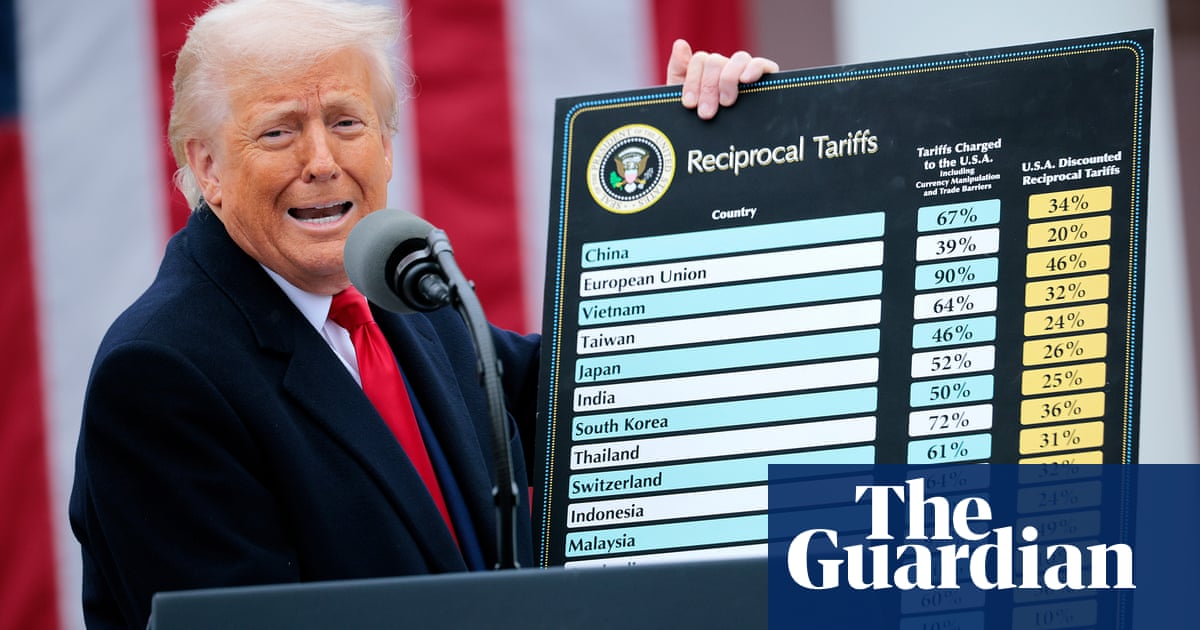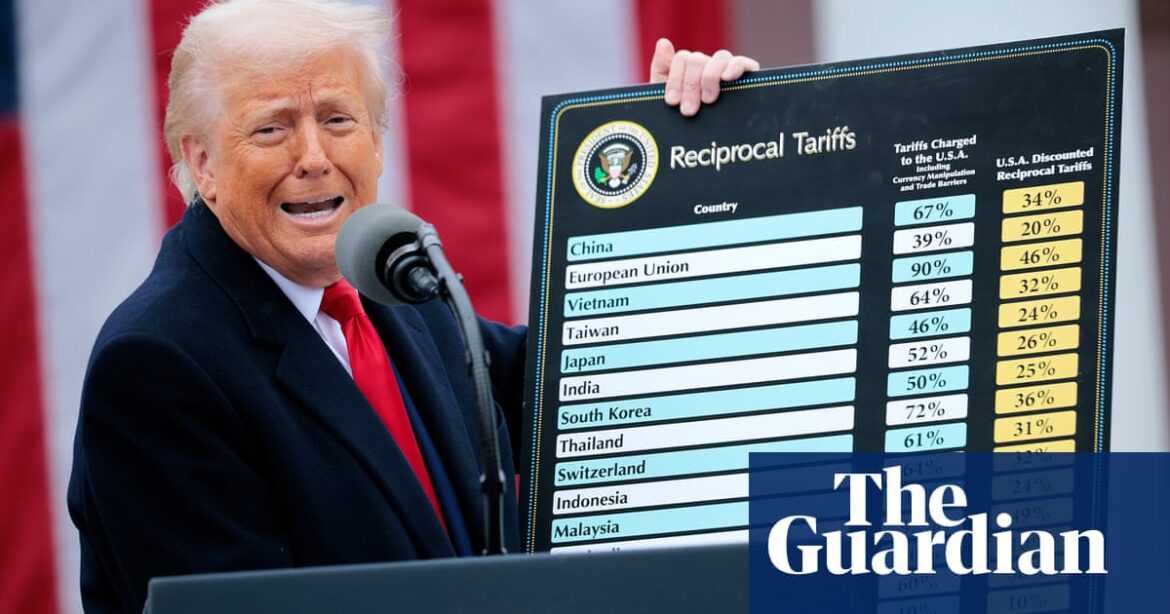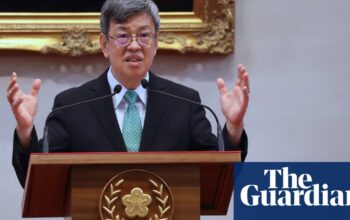
Donald Trump announced sweeping tariffs on some of its largest trading partners on Wednesday, upending decades of US trade policy and threatening to unleash a global trade war on what he has called “liberation day”.
Trump said he will impose a 10% universal tariff on all imported foreign goods in addition to “reciprocal tariffs” on a few dozen countries, charging additional duties onto countries that Trump claims have “cheated” America.
The 10% universal tariff will go into effect on 5 April while the reciprocal tariffs will begin on 9 April.
“This is one of the most important days, in my opinion, in American history,” Trump said in a long-winded speech on the White House lawn. For decades America had been “looted, pillaged and raped” by its trading partners, he said. “In many cases, the friend is worse than the foe.”
Over the past few months, Trump has rattled global stock markets, alarmed corporate executives and economists, and triggered heated rows with the US’s largest trading partners by announcing and delaying plans to impose tariffs on foreign imports several times since taking office.
But for the start of what appears to be a dramatic shift in American trade policy, one that could cause ricochets in the global economy, Trump tried to sell the tariffs with a celebratory tone.
Nine giant US flags flanked Trump on stage in the Rose Garden, as the president spoke in front of his cabinet and a crowd of union workers wearing hard hats and fluorescent construction worker vests. Before Trump came on stage, a marine band played celebratory music to excite the crowd.
At one point, Trump paused his speech to throw a Maga hat into the crowd. In the next breath, he announced the 10% universal baseline tariff.
In the middle of his hour-long speech, the president displayed a chart that showed the “unfair” fees that countries placed on the US, alongside the new “USA Discounted Reciprocal Tariffs”. China charged the US 67% in “unfair” fees, and said the US would now levy a 34% fee. The EU charges 39% on imports, according to the White House, and will now be levied at 20%. Trump said the UK would be charged 10% – the baseline tariff – equal to the Trump administration’s calculations of the UK’s fees on US imports.
Special exceptions were made for Canada and Mexico, though the countries were previously targets of proposed broad tariffs. The White House said that goods covered by an existing trade deal with Canada and Mexico will continue to see no tariffs.
Trump said the tariff calculations also include “currency manipulation and trade barriers”, though the White House has not elaborated on how it calculated the new tariffs.
It appears Trump has zeroed in on the industry-specific tariffs the countries have placed on American exports. In his speech, Trump criticized policies like the EU’s ban on imported chicken, Canadian tariffs on dairy and Japan’s levies on rice.
Trump said the US would charge half of the fees he feels trading partners unfairly impose on the US because the US people are “very kind”. The countries have “placed massive tariffs on [US] products and created non-monetary tariffs to decimate our industries”, Trump said, calling them “common sense reciprocal tariffs”.
“Reciprocal: that means they do it to us and we do it to them. Very simple, can’t get any more simple than that,” he said. “This indeed will be the golden age of America,” he said.
Trump was ultimately following through with a promise he made during the election: on the campaign trail, Trump floated the idea of a 10% universal tariff on all imported goods.
The new tariffs come on top of a lineup of levies that Trump has already implemented: an additional 20% tariff on all Chinese imports and a 25% tariff on all steel and aluminum imports. There is also a 10% tariff on energy imports from Canada.
after newsletter promotion
Trump also announced in March a 25% tariff on all imported vehicles and, eventually, imported auto parts, which will start going into effect on Thursday.
“These tariffs are going to give us growth like you’ve never seen before, and it’ll be something very special to watch,” Trump said.
Trump has made clear the goals he wants to accomplish through his tariffs: bring manufacturing back to the US; respond to unfair trade policies from other countries; increase tax revenue; and incentivize crackdowns on migration and drug trafficking. But the implementation of his tariffs has so far have been haphazard, with multiple rollbacks and delays, and vague promises that have yet to come to fruition
But the threats have soured US relations with its largest trading partners. Canada’s prime minister, Mark Carney, has called them “unjustified” and pledged to retaliate. The European Union has said it has a “strong plan” to retaliate. Other retaliatory tariffs could eventually lead to higher prices that would hurt American exporters.
The US stock market closed slightly up on Wednesday, ahead of Trump’s announcement, with a slight boost from news that Elon Musk may step away from his role in the White House soon to focus on his businesses.
Even with the slight upswing, two of the three major stock exchanges saw their worst quarter in more than two years after Monday marked the end of the first quarter.
In March, consumer confidence plunged to its lowest level in over four years. Polls have shown that tariffs are unpopular with Americans, including Republicans. Only 28% of people in a poll from Marquette Law School released Wednesday said that tariffs help the economy.
The uncertainty around Trump’s tariff policies have increased the likelihood of a recession, according to recent forecasts from economists at Goldman Sachs, JP Morgan and other banks.
Source: theguardian.com



